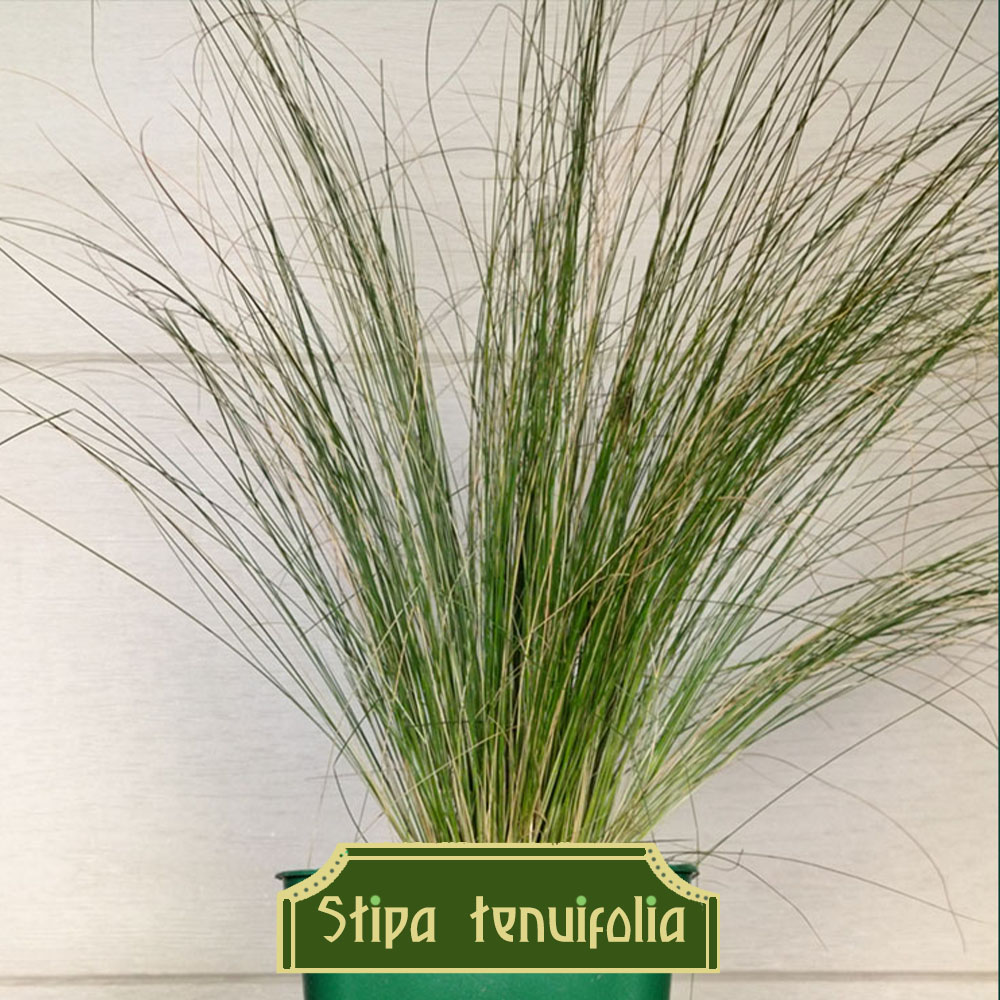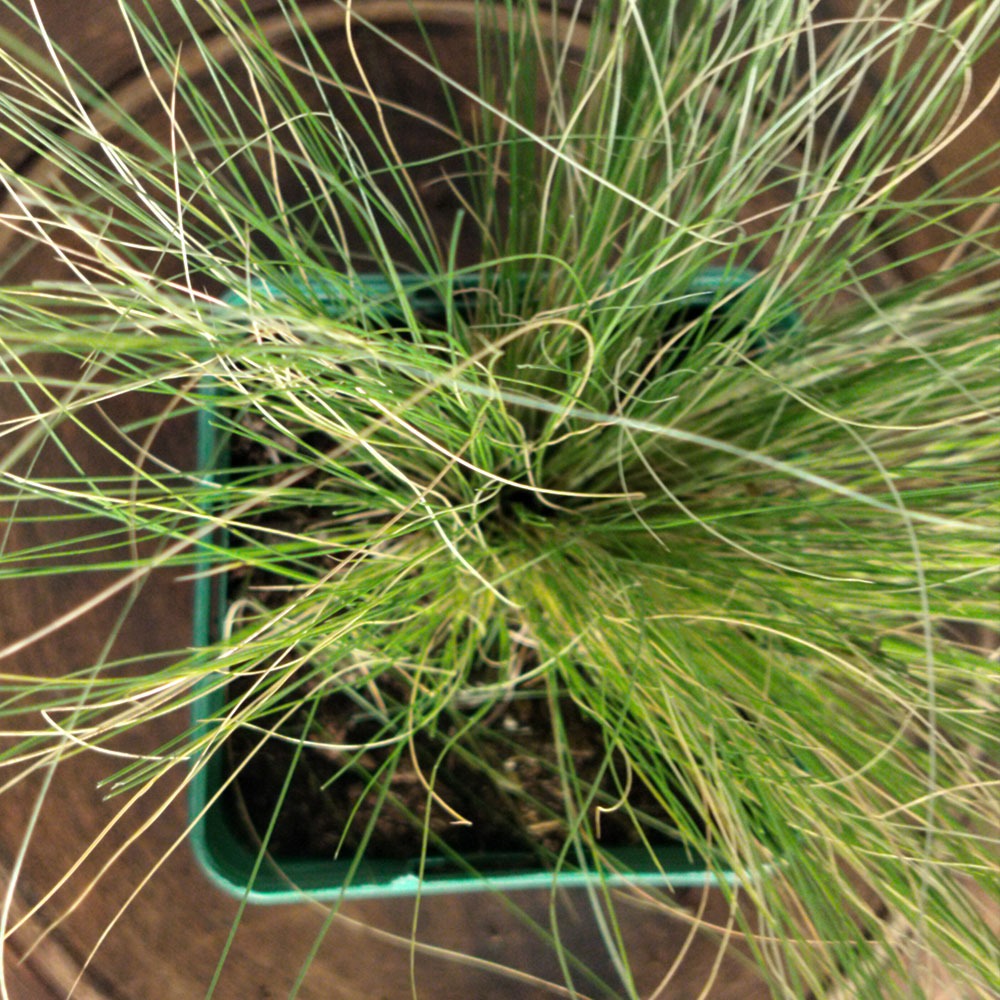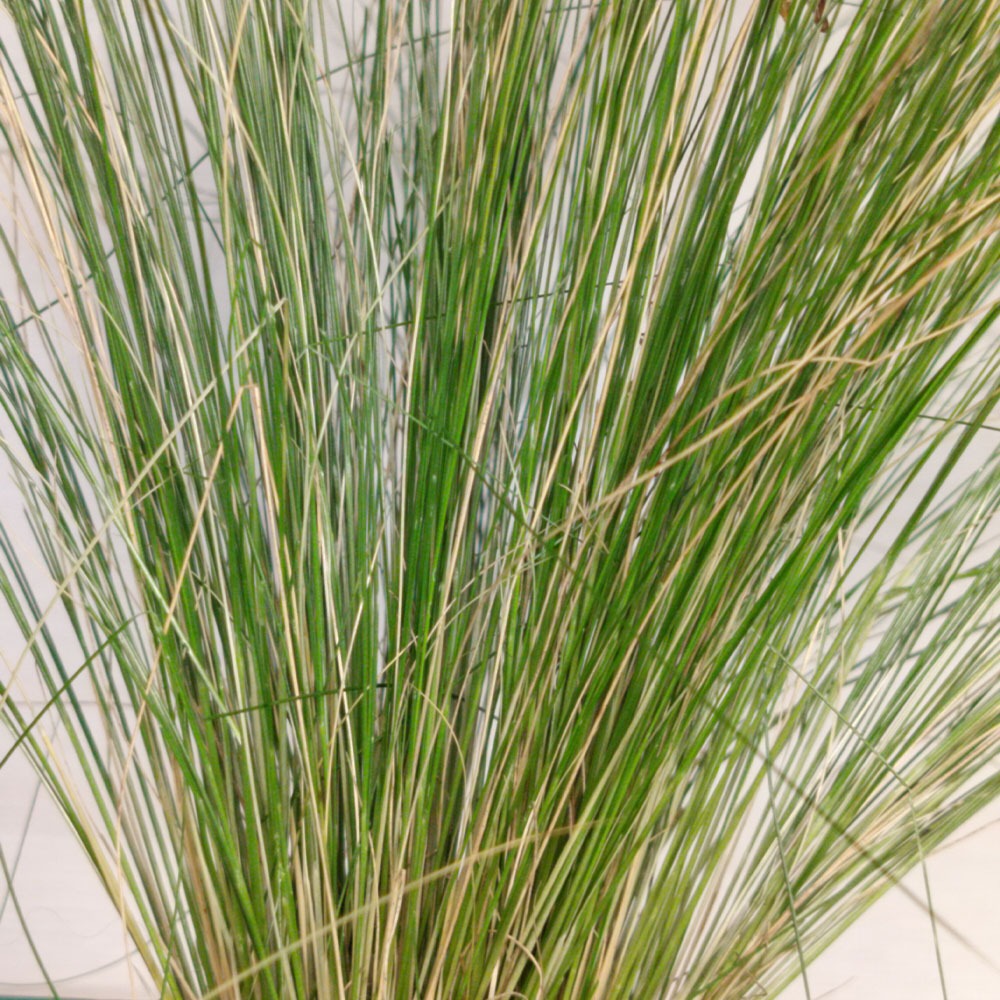No products in the cart.
Stipa tenuifolia
A species of long, blonde, feathery grass.
Rated 0 out of 5
0 customer reviews
4,90 €
Only 29 item(s) left in stock!
SKU: pda251
Category: Balcony-Friendly, Bouquet, Evergreen, Frost Hardy, Grey Ladies

Stipa tenuifolia
4,90 €
Only 29 item(s) left in stock!
Stipa tenuifolia, commonly known as Mexican feather grass, is a graceful, clump-forming ornamental grass prized for its fine, hair-like foliage and airy, flowing texture
Also known as Nassella tenuissima or Stipa tenuissim, this perennial forms soft mounds of slender, bright green leaves that sway elegantly in the slightest breeze, creating a sense of movement and lightness in the garden.
It is still widely referenced in botanical and horticultural literature under its synonym Stipa tenuifolia, and has received the Royal Horticultural Society’s Award of Garden Merit under that name.
Regardless of the names that we have imposed upon it, this tall grass will create a beautiful dynamism and softness wherever she lives.
👨🌾 GARDENING TIPS👨🌾: Stipa tenuifolia
Learn more about gardening with Stipas:
The Tale & The Botany : Stipa tenuifolia
“Stipa” is derived from the Greek word stuppeion meaning ‘fibre’ in reference the use of fibers of the species Stipa tenuissima to make rope.
“Nassella” is derivaed from the Latin diminutive of nassa, meaning a ‘narrow-necked wicker basket’.Stipa tenuifolia
Its foliage remains relatively low to the ground, typically reaching 30–60 cm in height, while its flower plumes can rise slightly above the leaves, adding a delicate vertical accent.
Floral Morphology
In late spring and early summer, Stipa tenuifolia produces narrow, feathery seed heads that catch the light, often shimmering like golden threads in the sun.
These flower plumes persist for weeks, gradually maturing to a subtle straw or beige tone, adding gentle, long-lasting interest well into autumn.
The plant’s texture and movement make it particularly effective in mixed borders, rock gardens, or naturalistic plantings, where it can contrast beautifully with bold-leaved perennials or colorful flowering plants.
Ecology
Stipa tenuifolia thrives in well-drained soil and prefers full sun, showing remarkable tolerance for drought once established.
It is hardy in a wide range of climates, making it a versatile and low-maintenance addition to ornamental landscapes.
Its light, flowing form also makes it an excellent choice for container plantings, patio accents, or as a border plant that softens hard edges.
NOTES:
>> It is illegal to import N. tenuissima into Australia as it is classified as invasive.
>> Sometimes it is imported as a nursery plant under incorrect or outdated names.
Other Names:
Mexican feathergrass
Finestem needlegrass
Argentine needle-grass.
Origin:
South-Western United States, Northern Mexico and Argentina.
| Weight | 0,5 kg |
|---|---|
| Flowering | July, August |
| Soil | Dry, Poor |
| Exposure | Full Sun |
| Frost Tolerance | -15°C to -20°C |
| Size | 0.45m H x 0.45m W |
Reviews
0
Rated 0 out of 5
0 customer reviews
5
0
4
0
3
0
2
0
1
0
Only logged in customers who have purchased this product may leave a review.
Related Products
Aegopodium podagraria ‘Variegata’
A popular light, green and white groundcover.
A popular light, green and white groundcover.
Rated 0 out of 5
Mertensia maritima
A deciduous perennial with fleshy, blue-grey-green leaves that naturally thrives on the wind and sea swept coasts
A deciduous perennial with fleshy, blue-grey-green leaves that naturally thrives on the wind and sea swept coasts
Rated 0 out of 5
Jacobaea maritima
A wooly white perennial plant from the Mediterranean region.
A wooly white perennial plant from the Mediterranean region.
Rated 0 out of 5
Artemisia abrotanum
A highly fragrant, medicinal and striking grey-green bush.
A highly fragrant, medicinal and striking grey-green bush.
Rated 0 out of 5
Euphorbia myrsinites
Known for its draping form of silver-gray foliage and radiant blooms.
Known for its draping form of silver-gray foliage and radiant blooms.
Rated 0 out of 5
Koeleria glauca Blue Sprite
An ornamental, low growing blue grass
An ornamental, low growing blue grass
Rated 0 out of 5
Lavandula angustifolia
A highly aromatic, flowering perennial used for cooking in many cultures
A highly aromatic, flowering perennial used for cooking in many cultures
Rated 0 out of 5
Salvia officinalis
A fragrant herb used in many cultures for cooking and deserts.
A fragrant herb used in many cultures for cooking and deserts.
Rated 0 out of 5
Nepeta x faassenii
Catnip is known for its grey-green, aromatic foliage and masses of lavender blue flowers.
Catnip is known for its grey-green, aromatic foliage and masses of lavender blue flowers.
Rated 0 out of 5
Artemisia alba subsp camphorata
A highly fragrant, grey-green bush.
A highly fragrant, grey-green bush.
Rated 0 out of 5
Tanacetum densum subsp amani
A shrublet composed of soft, finely divided silvery gray-white leaves.
A shrublet composed of soft, finely divided silvery gray-white leaves.
Rated 0 out of 5
Helichrysum italicum
An evergrey, fragrant perennial that will bring a distinctly Mediterranean atmosphere.
An evergrey, fragrant perennial that will bring a distinctly Mediterranean atmosphere.
Rated 0 out of 5
Artemisia Valerie Finnis
A semi-evergreen, aromatic variation on the theme of Artemisia.
A semi-evergreen, aromatic variation on the theme of Artemisia.
Rated 0 out of 5
Helichrysum orientale
A perennial with soft, ash gray foliage and yellow button flowers
A perennial with soft, ash gray foliage and yellow button flowers
Rated 0 out of 5
Sedum spectabile Septemberglut
A species of flowering plant in the stonecrop family – drought tolerant, with vibrant pink flowers and a spectacularly long flowering period.
A species of flowering plant in the stonecrop family – drought tolerant, with vibrant pink flowers and a spectacularly long flowering period.
Rated 0 out of 5
Salvia sclarea – Clary Sage
A fuzzy perennial that is largely grown for its essential oil.
A fuzzy perennial that is largely grown for its essential oil.
Rated 0 out of 5
Cerastium tomentosum var. columnae
A grey-green spreading ground cover from the mountains.
A grey-green spreading ground cover from the mountains.
Rated 0 out of 5
Stachys byzantina
Silky white-grey leaves and tall striking flowers
Silky white-grey leaves and tall striking flowers
Rated 0 out of 5
recent view product
Stipa tenuifolia
A species of long, blonde, feathery grass.
A species of long, blonde, feathery grass.
Rated 0 out of 5
Lavandula angustifolia
A highly aromatic, flowering perennial used for cooking in many cultures
A highly aromatic, flowering perennial used for cooking in many cultures
Rated 0 out of 5
Lysimachia ciliata ‘Firecracker’
Strong, upright clumps with color-changing, dramatic leaves and little yellow flowers
Strong, upright clumps with color-changing, dramatic leaves and little yellow flowers
Rated 0 out of 5
Glechoma hederacea Variegata
A ground cover known for its fragrant, unusually variegated foliage
A ground cover known for its fragrant, unusually variegated foliage
Rated 0 out of 5
Tanacetum balsamita
A perennial known for its distinctively aromatic foliage and tiny yellow flowers
A perennial known for its distinctively aromatic foliage and tiny yellow flowers
Rated 0 out of 5















































There are no reviews yet.